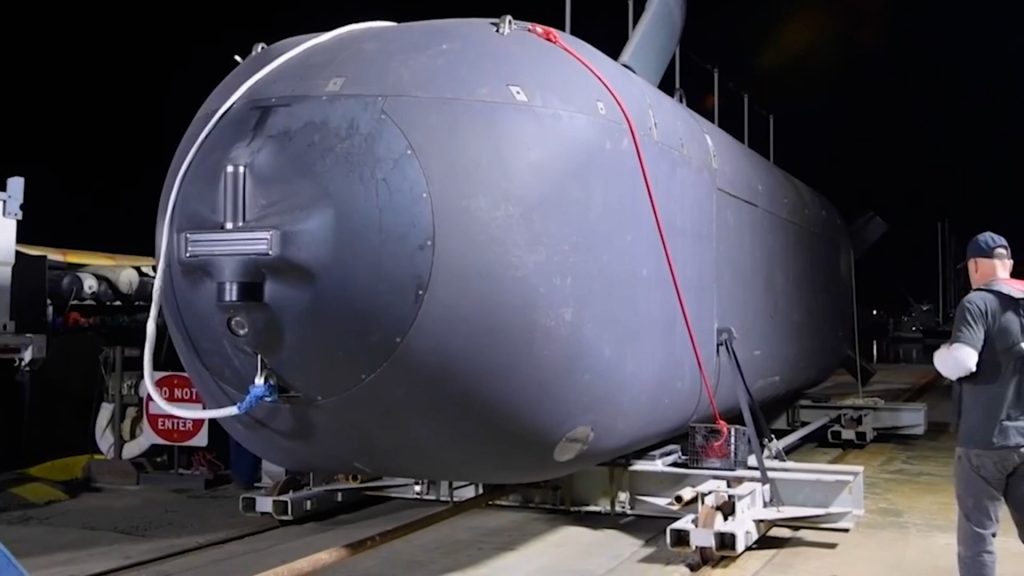US military leans on AI and autonomy to shape the future of naval warfare

The U.S. military is increasingly turning to artificial intelligence and autonomous systems to enhance its maritime capabilities, signaling a generational shift in naval warfare. At this year’s Sea Air Space conference, hosted by the Navy League, senior military leaders and industry partners outlined how these technologies are reshaping defense strategies.
Rear Adm. Kurt Rothenhaus, chief of naval research, said the Navy views AI as a foundational technology, comparing it to electricity in its ubiquity and versatility. He explained that its applications span warfighting, readiness and operational efficiency. Rothenhaus emphasized that the Navy’s approach focuses on identifying specific problems for AI to solve, rather than adopting the technology for its own sake.
He said the service is asking, “What are the most important and critical warfighting gaps, readiness gaps, that we want to leverage the technology [for], as established by the CNO and the NAVPLAN?”
The tactical edge
Maj. Gen. Farrell Sullivan, director of capabilities development and integration for the Marine Corps, said the Marines have prioritized tactical edge operations that integrate sensing, decision-making and long-range fires — capabilities enhanced by AI and autonomy.
Sullivan explained, “The commandant’s intent is that we are fighting at the tactical edge in that environment, and we’re providing capability to sense, make sense and deliver long-range fires, or provide what’s needed to our joint partners and our combined partners to deliver their long-range fires.”
Sullivan described this as the next logical step in the Corps’ embrace of autonomous projects, such as the Autonomous Low-Profile Vessel (ALPV), nicknamed the “Narco Boat,” which is used to deliver supplies to forward-deployed Marines. He added that the Corps is now expanding its use of maritime sensors to complement Navy operations, a domain in which it had not traditionally operated.
“Now we’re moving towards sensors that we are employing at sea — not to compete with the Navy, but to fill in where the Navy may not be,” he said. “That’s a business that the Marine Corps has not been in in the past.”
Role of the defense industry
Industry leaders have played a critical role in advancing these capabilities. Brandon Tseng, a former Navy SEAL and cofounder of Shield AI, has led efforts to develop AI pilots like Hivemind, which autonomously flew then-Secretary of the Air Force Frank Kendall in an F-16. Shield AI’s platforms have been deployed in Iraq, Afghanistan, Syria and most recently in Israel during hostage rescue operations in Gaza.
Tseng spoke to the advancements, “Certainly, defense technology was not a word that I ever heard in 2015. It’s great to see where we are today and the role that defense tech companies are playing, helping great customers like our Coast Guard, our Marine Corps and our Navy solve some of their most challenging problems.”
He added that he aims to put a million AI pilots into the hands of military customers within the next decade, and projected that number could reach 100 million by 2045.
“That means it’s a complete fundamental transformation of how a military thinks about their military, how a military thinks about their force structure,” Tseng said. “When you are no longer limited by the number of personnel that you have in your military, what kind of power can you project? What kind of adversaries can you deter? That is why AI and autonomy is the most transformational capability of our time.”
Buying capability or data
The U.S. Coast Guard has partnered with Shield AI to use its V-BAT platform under a contractor-owned, contractor-operated model. This arrangement allows the Coast Guard to access intelligence, surveillance and reconnaissance services without purchasing the hardware. Brian Campo, deputy assistant commandant for C4 and IT at the Marine Corps, said the military increasingly seeks capabilities rather than products.
“I want to buy a capability. I don’t necessarily want to buy a product,” he said. “If I think about needing C2 data on the water, I don’t necessarily need to own the vehicle that is delivering that. Yes, sometimes we will have to own the vehicle because of some unique constraint. But if I’m looking to get sensor data, if you can put a sensor in a place where I need data from it, I am probably happier to buy that data from you than I am to buy the platform that you’re using to deliver it.”
The Department of Defense has backed its AI ambitions with significant funding, allocating $1.1 billion in fiscal year 2023, $1.8 billion in 2024, and proposing the same for 2025, according to a report by ExecutiveGov.
Despite concerns about fully autonomous warfare, Sullivan said human oversight remains central to current and future operations.
“There may be a day that comes where we do go fully autonomous, and there’s less human in the loop,” he said. “But that’s not where we are today, and that’s not what we intend to do.”
As the military continues to explore the intersection of AI, autonomy and maritime operations, leaders remain focused on balancing innovation with strategic intent.
Access the full Weapons and Warfare episode here.
Access all Weapons and Warfare podcast episodes here.





